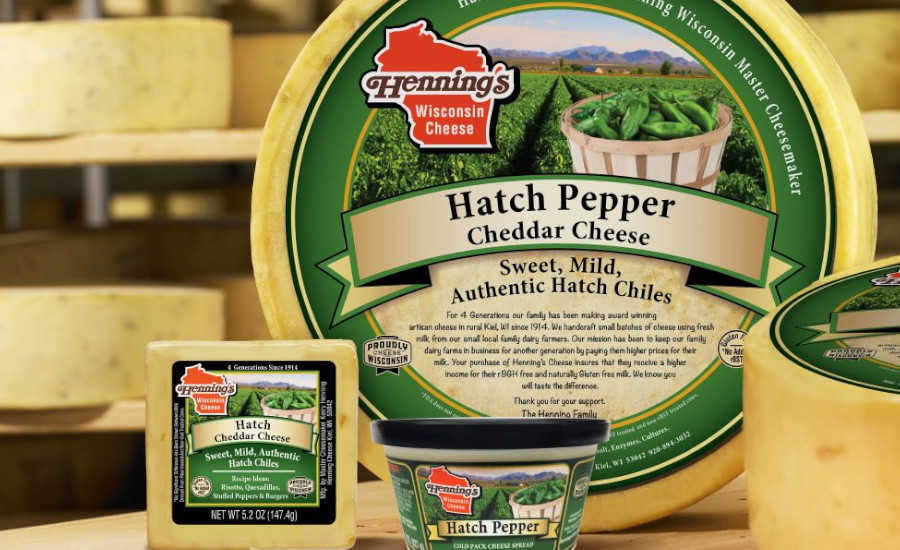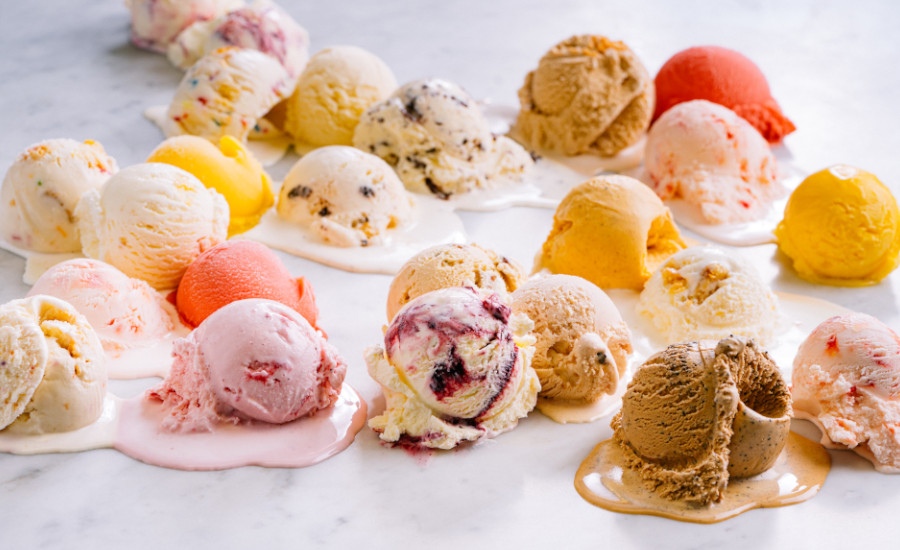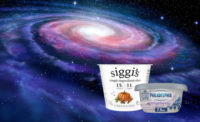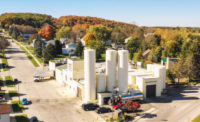Penned by the Commodores’ lead singer Lionel Richie, “Easy (Like Sunday Morning”) is a slow ballad expressing a man's feelings as a relationship ends. However, instead of being depressed about the break-up, the future solo superstar states that he is instead "easy like Sunday morning.” In the world of consumer packaged goods (CPGs), there’s nothing “slow” about internet and eCommerce sales as the “ease” of turning to keyboards to place shopping orders abounds.
Particularly during the COVID-19 pandemic in 2020, eCommerce was a go-to resource for consumers needing weekly grocery staples like milk, butter, bread, and water. Nic Boyer, director of eCommerce, and Anne Zybowski, vice president of eCommerce, digital shelf for Chicago-based Circana (formerly IRI and NPD), explains that eCommerce and omnichannel engagement from all consumers accelerated the adoption of digital behaviors during the past five years.
“Currently, 83% of U.S. households are eCommerce buyers,” they state, citing the company’s OmniConsumer Receipt Panel. They also note that eCommerce shares of all categories continue to grow as a percentage of total retail sales. For instance, general merchandise categories range from 30-65% of sales (32% apparel, 40% toys, 56% small appliances, 58% tech, 65% juvenile).
Beyond that, grocery-based categories also have seen sustained growth in purchasing preferences online from 2019/pre-pandemic to 2022.
“Non-Edible CPG categories increased to 25% eCommerce penetration in 2022 — it now represents $1 in $4 dollars spent at retail. Foodservice nearly tripled from 5% eCommerce penetration in 2019 to 15% in 2022,” Boyer and Zybowski state. “Food and beverage CPG eCommerce sales reached $63.6 billion in 2022, representing 8.1% of total omnichannel sales.” The 8.1 percentage growth is up from 5% in 2019 and 7% in 2020, they add.
Significant opportunity for dairy
According to a Circana OmniMarket report, food and beverage CPG eCommerce categories saw strong growth in 2022 versus 2020. Non-alcoholic beverages were up 44%, while frozen foods and refrigerated foods climbed 28% and 27%, respectively.
“Circana believes significant opportunity remains for the grocery industry — and dairy — as food and beverage penetration lags non-edible CPG,” Boyer and Zybowski state. “…Approximately 7.7% of CPG dairy sales are coming from eCommerce, led by Processed Cheese (9.3%), Natural Cheese (8.7%), and Yogurt (8.3%) categories. Shoppers are more reluctant to make online purchases for Fresh Eggs, Dairy Milk, and Butter as online penetration lags total Dairy.”
Martha Kemper, vice president of Dairy Experience — Demand at St. Paul, Minn.-based Midwest Dairy, points out that 60-65% of the population is adopting online shopping for fresh grocery, and demand is predicted to grow significantly.
“In fact, it is predicted that by the year 2025, one in three grocery trips will be executed digitally,” she wrote in a September 2021 article. “Furthermore, data shows that households who are shopping online spend 36% more than those that shop in-store, so as the number of online shoppers increases, so do sales.”
Circana’s experts agree that investing in eCommerce is crucial to sales success. “There is a massive opportunity for dairy manufacturers on two-fronts,” according to Boyer and Zybowski. “Dairy vs. Refrigerated: a $420 million opportunity for the industry to close the gap from 7.7% Dairy to 8.2% Refrigerated. For private-label [PL], national brands are not gaining their fair share online versus PL, representing a $500 million opportunity for brands.”
A report on the United States online grocery market from Dublin, Ireland-based Research and Markets focused on offerings from some of the biggest retailers and eCommerce giants, including Walmart, Amazon, Kroger, Fresh Direct, COSTCO, Maplebear, Thrive Market, Target, Safeway and Shopfoodex. During the forecast period of 2022-2028, the market research firm predicts “an impressive CAGR [compound annual growth rate] during the forecast period.”
“Customers can order fresh and packaged goods like meat, seafood, cereals, fresh fruits and vegetables, dairy, cereals, snacks, drinks, and other cooking necessities through online grocery platforms,” the report states. “These platforms give customers flexible payment methods, let them choose delivery times, follow the delivery process, and access a large selection of products.”
The ease of use to shop grocery online when busy schedules will allow and heavy reliance on smartphones enables consumers to seamlessly add items to a cart, checkout, pay and receive (sometimes in 24 hours or less) said groceries, alcohol, diapers, pet supplies, electronics, etc., at one’s doorstep has led to an 11 million increase of people shopping online, from 299 million using the internet in 2021 versus 288 million in 2020.
Research and Markets notes: “In 2021, 93 percent of adults in the nation reported using the internet at least occasionally, up to only 76 percent in 2010. In terms of online audience size, the United States is one of the largest internet markets in the world, following only China and India.”
Shoppers develop shopping habits and expectations based on experiences in other purchasing environments. Convenience and the ability to locate items easily at-store and online is critical, with online shoppers preferring websites that enable them to build a basket versus one item at a time, Circana’s Boyer and Zybowski stress.
“In grocery, a large part of that value proposition is the ability to purchase from ‘favorites’ and consolidate purchasing of additional items from categories that may have previously been purchased at a drug store or mass retailer, but is consolidated in larger online basket,” they explain. “Within the basket, refrigerated and frozen items tend to over-index online versus in-store basket.”
Dairy brands share experiences

Consumers looking for a specific artisanal cheese or limited-edition ice cream that they cannot locate in a brick-and-mortar store often turn to a brand’s website. Rebekah Henschel, co-owner of Henning Cheese, says 2020 eCommerce sales were “booming” because of the pandemic with the cheese processor “seeing much higher eCommerce sales from March 2020 through March 2021.”
While post-pandemic sales have leveled off, eCommerce sales of the Kiel, Wis.-based company’s specialty cheeses continue to remain slightly higher than before the pandemic.
“This is just a guess, but I would assume that consumers who are purchasing artisan dairy products (like specialty cheeses) via eCommerce are going directly to the brand website,” Henschel says. “Companies have gotten creative with offering cheese of the month programs, gift packs, discounted items, and other things to entice consumers to shop their brand website.” Yet, consumers will purchase commodity-type items and groceries on third-party sites like Amazon and eBay, she suggests.
The holidays also can help drive online sales. Henschel explains: “I think there is potential for most companies to increase their business via eCommerce especially during November and December where consumers are looking to send holiday gifts. For smaller companies, like ourselves, we do not have mass distribution in retailers across the country. There are places where Henning’s Cheese cannot be found in the local grocery store. eCommerce is a great way for our customers to get their favorite Henning’s cheeses delivered right to their door.”
When brands offer limited-edition ice creams that can only be purchased on their website and/or at a local ice cream shop, they are creating excitement for their flavors.
With a 70-year legacy of creating the finest ice creams made from scratch, McConnell’s Fine Ice Creams notes that its alcohol-infused flavors have sold out online at the same rate as its other limited-edition flavors, notes Michael Palmer, CEO of McConnell’s Fine Ice Creams, Santa Barbara, Calif.
However, the first year (2021) of its collaboration with Hye, Texas-based Garrison Brothers Whiskey, its Whiskey & Pecan Pralines flavors sold out within the first two weeks of launching. “This is our third year in a row collaborating with Garrison Brother to make Whisky & Pecan Pralines. Each year since we’ve increased inventory and the flavor has continued to sell out,” Palmer explains.
“The consumer reaction is a testament to how beloved the flavor is, as well as the perfect combination of Garrison Brothers’ bourbon whiskey and our iconic ice cream.”
Last summer, the company released its Vacation a la Mode collection, a limited run of rum-infused flavors, which also sold out quickly, Palmer says.
“Sweet Caramel Brownie is the top-selling flavor on our eCommerce channel along with our dairy-free line,” he adds. “Our customers also tend to choose the Pint of the Month Club subscription to receive 4 of their favorite pints on a schedule of their choosing.”
Yet, shipping ice cream, frozen treats, cheese and any dairy products that require refrigeration across the country presents some hurdles, experts note.
“Shipping ice cream is a tricky business,” Palmer says. “Frozen shipments cannot be in transit over the weekend, so we are limited to a Monday to Thursday shipping schedule, depending on transit times. We have an incredible shipping team that works to backstop weather circumstances by holding shipments or adding extra dry ice when needed, but there’s no perfect science to it and melted orders do occur, especially due to unforeseen carrier delays.”
Henning Cheese’s Henschel suggests that maintaining the quality of the product, particularly during the warm weather months, is a concern along with rising shipping costs.
“Shipping rates have increased over the past few years, which may deter customers from going this route. However, if you are a smaller company like we are, this is sometimes the only way your product can reach consumers in certain parts of the country,” she says.

The expansion of the eCommerce landscape
Although shipping dairy products through eCommerce could present some challenges, Circana’s Boyer and Zybowski dispel the notion that consumers won’t purchase perishable products online. “There is often a perception that consumers won’t purchase perishable, frozen or refrigerated items via eCommerce. The data shows the inverse is true, and once shoppers become online shoppers for groceries, they buy more perishable, frozen and refrigerated items than they do on a trip to the store,” they explain. “With more of total growth coming from eCommerce, brands must be visible online to drive overall sales and share growth.
“Innovation and sustainability is critical overall to growth for dairy brands; online offers more efficient ways to reach and target consumers with new products,” they continue. “Once shoppers put a new item in the basket, they are more likely to continue to purchase that item as on many retailer sites, up to 50% of online trips start from the ‘frequently purchased’ section of the site versus searching the aisles. The digital shelf also offers more ways to put images and content in front of shoppers to provide context to innovation, key features and differentiators to inspire trial. Online also enables more efficient ways to cross-promote with items and other brands across the store to drive sales.”
The eCommerce channel itself is changing, shares Tim Warner, vice president of sales for Exclusive Concepts Inc., Burlington, Mass. “Ecommerce once relied on five core channels. Today, it’s a mega mix of 15-plus digital platforms customers live and buy on,” he says. “But even as the eCommerce landscape expands, consumers are tougher to reach due to privacy laws and walled gardens. To be truly omnipresent, brands need a new approach that combines several factors.”
These include a robust online presence that draws consumers to one’s digital shelf, particularly since 70% of shoppers won’t scroll past the first page and 64% only pick products at the top of the page. In addition to price comparison, ratings and reviews and prioritizing and marketing customer reviews should be a brand and retail strategy moving forward, Warner suggests.
Lastly, dairy brands should combine organic and paid marketing to optimize content, increase organic presence and fully increase visibility to capture the attention of the customer browsing the digital shelf.
Boyer and Zybowski note that the market research firm continues to see year-over-year growth for third-party delivery services like Instacart and Door Dash, which saw a 6.2% penetration in 2022. Yet, the growth rate for Total Dairy within the traditional online channel is nearly double at 11.2%.
As loyal consumers continue to save time and money shopping online, and “putting it on the list” to fulfillment is easier than ever, Circana believes there’s significant opportunity for dairy in edible CPG.
“Currently only 29% of households purchase dairy online vs. 33% for refrigerated or 83% of total store,” Boyer and Zybowski explain. “Even with only 29% of households purchasing online, eCommerce share continues to accelerate. Dairy manufacturers must win online to win in omnichannel. Per Forrester, 63% of sales are digitally influenced and brands must win at the digital shelf to drive growth.”


.jpg?height=200&t=1673539888&width=200)

